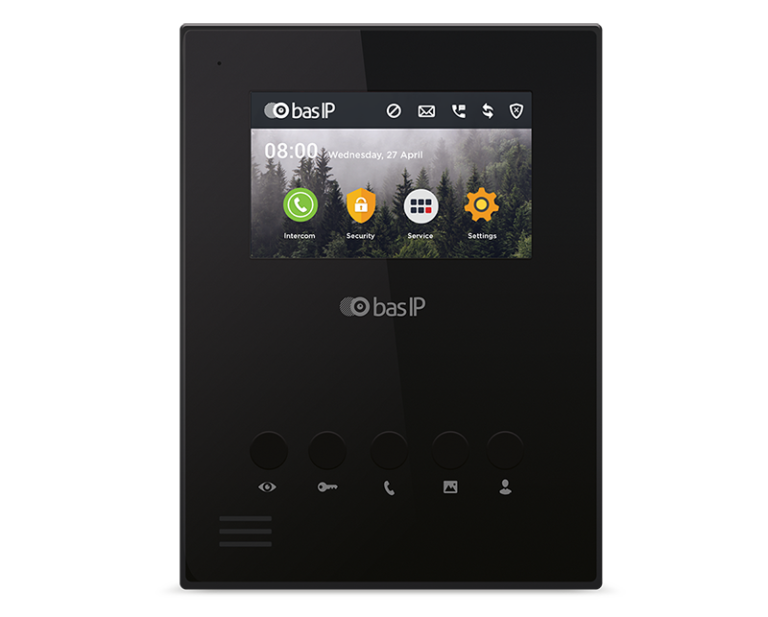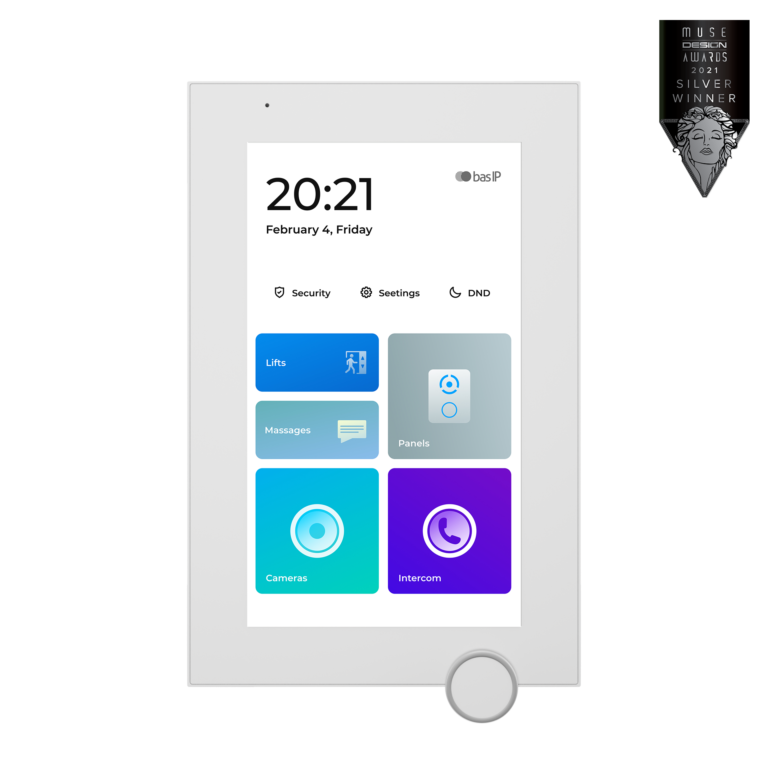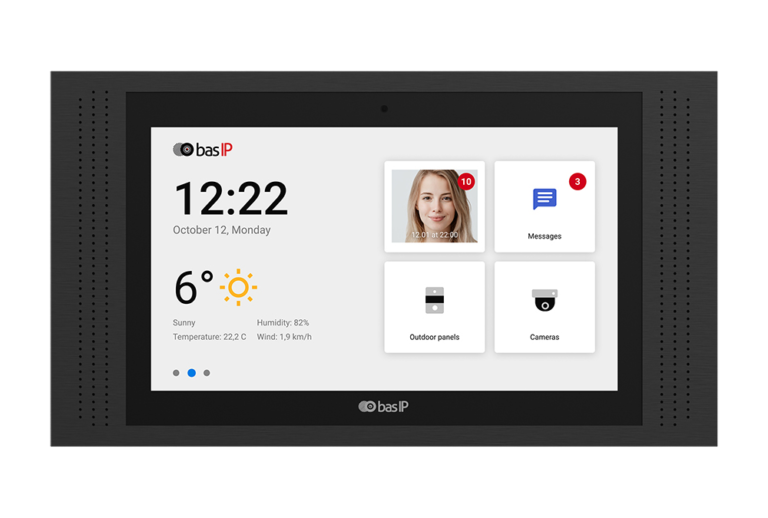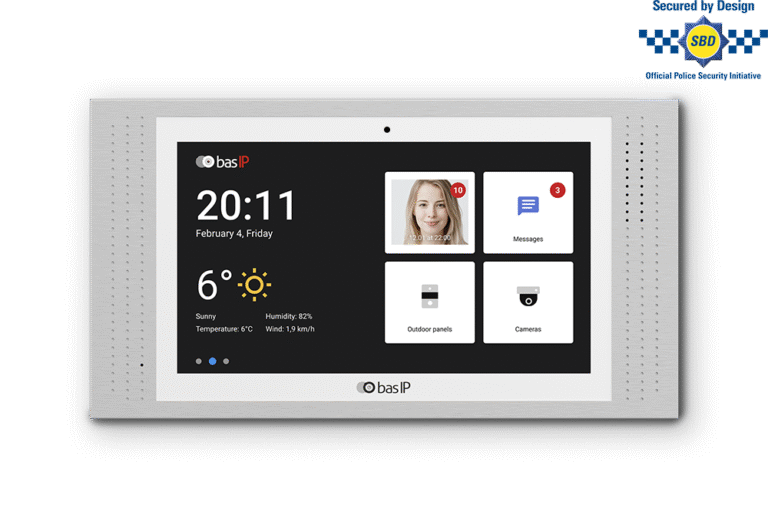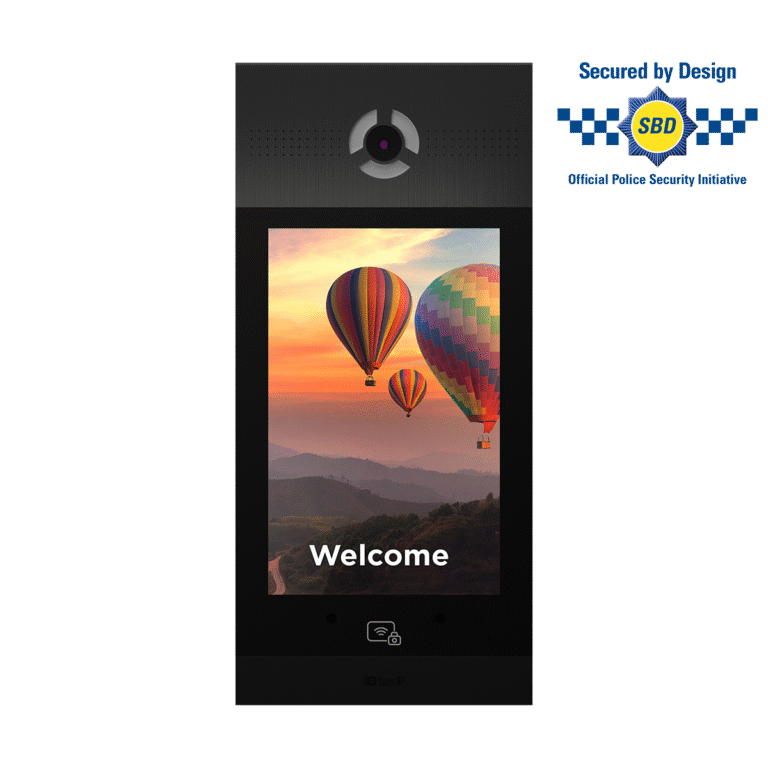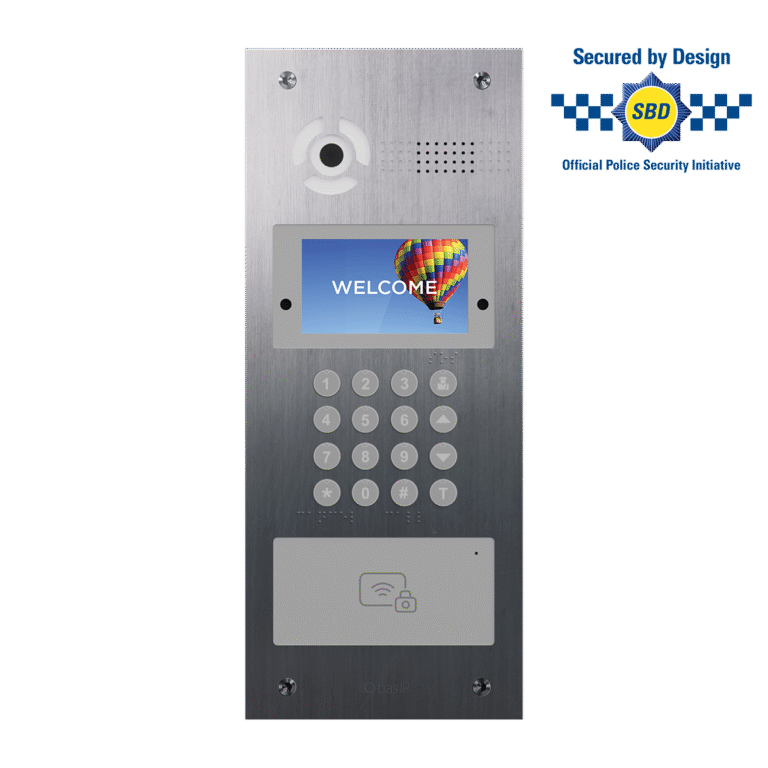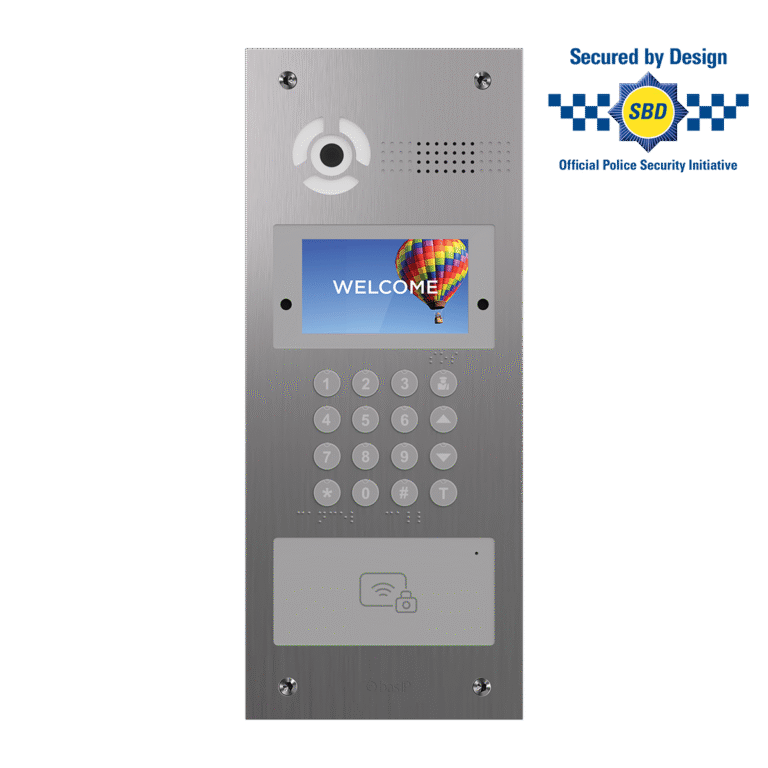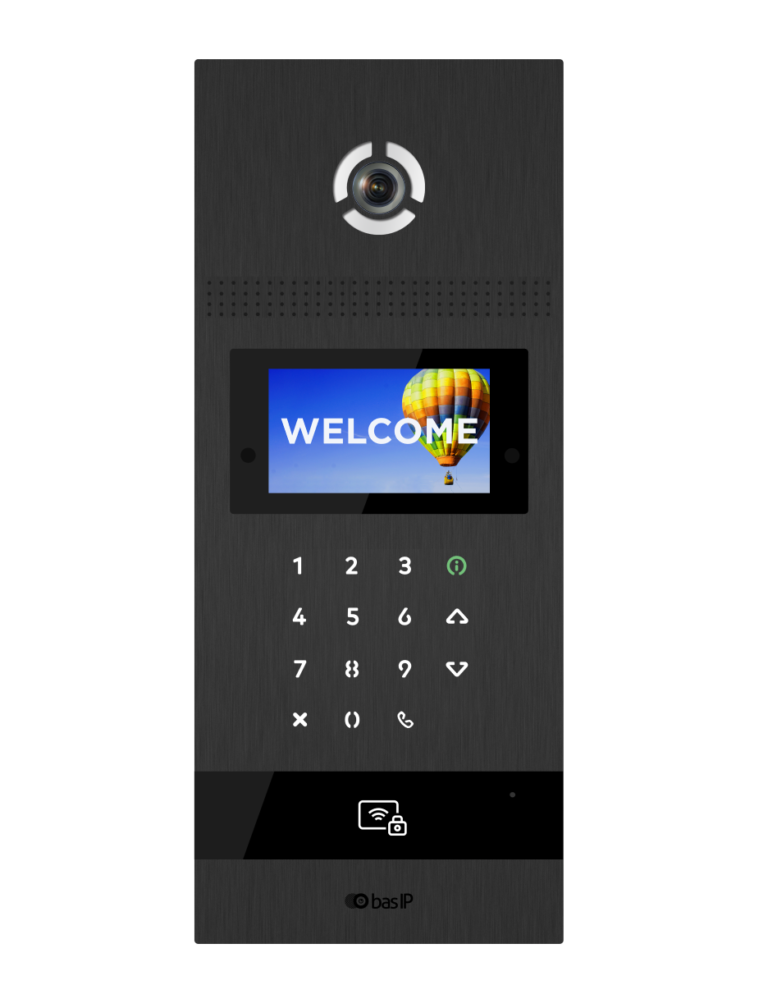Video Door Entry System with Keypad: Secure Access Control
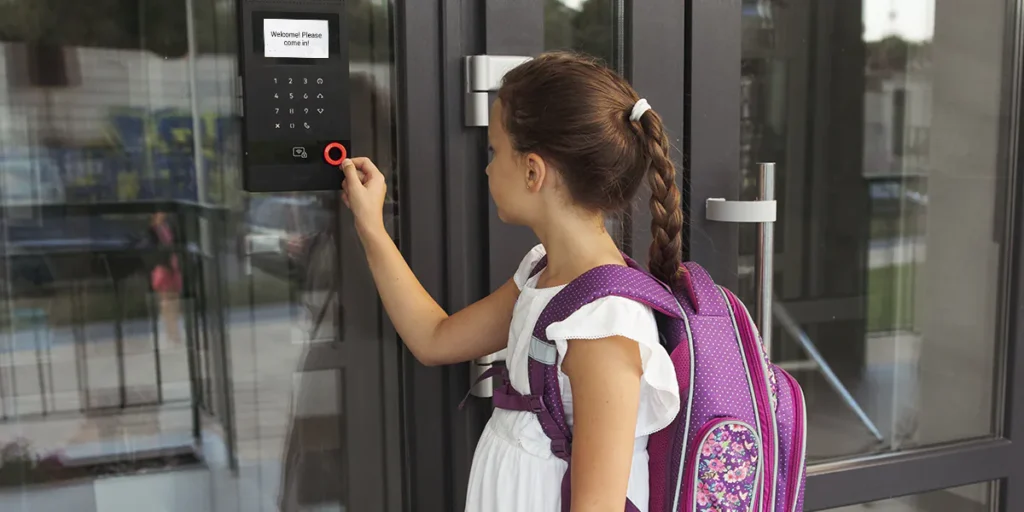
Definition of Video Door Entry Systems
Video Door Entry Systems, also known as video intercoms or doorbell cameras, are a type of access control system that adds an extra layer of security to homes, apartments, or business premises. These systems are designed to control who can access a property by providing visual and audio communication between the inside and outside of the premises.
At its most basic, a Video Door Entry System consists of two main components: an outdoor unit and an indoor unit.
The outdoor unit, often referred to as the door station or panel, is installed near the entrance of the property. It typically includes a camera, a microphone, a speaker, and a button. When a visitor arrives and presses the button, the camera captures video and the microphone picks up audio, which are then transmitted to the indoor unit.
The indoor unit, also known as the monitor or handset, is installed inside the property. It includes a screen to display the video feed from the outdoor unit, a speaker to play the audio, and often a microphone for two-way communication. Some systems also include a button or switch that can remotely unlock the door, allowing the homeowner to grant access without physically going to the door.
Video door entry systems can be wired or wireless. Wired systems are connected via cables and are often considered more reliable, but they require professional installation. Wireless systems use radio waves or Wi-Fi to transmit the signals, making them easier to install, but they can sometimes suffer from interference.
In recent years, smart Video Door Entry Systems have become increasingly popular. These systems can connect to the internet, allowing homeowners to view the video feed and communicate with visitors via a smartphone app, even when they’re not at home. They can also integrate with other smart home devices, such as locks, lights, and security systems, providing a more comprehensive security solution.
A video door entry system with a keypad entry is a modern and secure way of controlling access to a property. It is an electronic device that allows residents to see and communicate with visitors at the front door and unlock it remotely if required. The system has several components, including a door entry panel with keypad and indoor video phone.
Importance and Benefits of Video Door Entry Systems
Video Door Entry Systems are an integral part of modern home security solutions. Their importance lies in their ability to provide a higher level of security and control over who can access a property. Here are some key benefits:
- Enhanced Security: The primary benefit of Video Door Entry Systems is the enhanced security they provide. By allowing homeowners to see and communicate with visitors before granting access, these systems significantly reduce the risk of unwanted intrusions and potential security threats. They also serve as a deterrent to potential intruders who may be discouraged by the visible presence of a security system. Using a keypad as part of a video door entry system. Firstly, it provides an additional layer of security, as access can only be granted to those with the correct PIN code. This means that unwanted visitors or intruders cannot access the property, even if they manage to bypass the camera and intercom system.
- Convenience: Video Door Entry Systems offer a high level of convenience. With these systems, homeowners can identify and communicate with visitors without having to physically go to the door. This is particularly beneficial for large properties or for individuals with mobility issues. Furthermore, smart Video Door Entry Systems allow homeowners to monitor their property remotely via a smartphone app, providing peace of mind even when they’re not at home. A keypad allows residents to grant access to visitors remotely. This is particularly useful if the resident is not at home but still wants to allow access to a trusted visitor, such as a friend or family member. The visitor simply enters the PIN code into the keypad, and the door unlocks.
- Visitor Verification: These systems provide a reliable way to verify the identity of visitors. This is particularly useful in situations where service providers, delivery personnel, or unfamiliar faces are at the door. It allows homeowners to confirm the purpose of the visit and decide whether to grant access.
- Record Keeping: Many Video Door Entry Systems come with the ability to record video footage. This can be useful for keeping a record of who visited the property and when. In the event of a security incident, this footage can provide valuable evidence.
- Integration with Other Systems: Video Door Entry Systems can often be integrated with other security systems, such as alarms, CCTV systems, and smart locks. This creates a comprehensive security solution that provides multiple layers of protection.
- Increased Property Value: Having a Video Door Entry System can increase the value of a property. Prospective buyers often view advanced security features as a significant advantage, which can contribute to a higher selling price.
The video transmission in an IP video door entry system with the keypad goes through an IP (Internet Protocol) network. The video is sent to the indoor video phone via the internet or a local area network (LAN). IP video intercom systems like BAS-IP are designed to work seamlessly with various IP networks, making them easy to install and integrate with existing security systems.

Key Features to Look for in a Video Door Entry System
| Feature | Description | Why It’s Important |
|---|---|---|
| Video Quality | The clarity of the video feed from the outdoor unit. Higher resolution cameras provide clearer images. | Clear images help in accurately identifying visitors and spotting any suspicious activity. |
| Night Vision | The ability of the camera to capture clear images in low light conditions. | This feature is crucial for identifying visitors and monitoring activity outside your door during nighttime or in poorly lit conditions. |
| Two-Way Audio | Allows communication between the homeowner and the visitor through the system. | This feature enables you to speak with visitors without opening the door, enhancing both convenience and security. |
| Remote Access | The ability to access the video feed and communicate with visitors via a smartphone app. | This feature is particularly useful when you’re not at home. You can monitor your property and respond to visitors from anywhere. |
| Integration | The system’s ability to integrate with other smart home devices, such as locks, alarms, and security systems. | Integration allows for a more comprehensive and seamless home security solution. |
| Durability | The construction quality and weather resistance of the outdoor unit. | A durable system can withstand various weather conditions and last longer, providing reliable security. |
| Recording Capability | The ability of the system to record and store video footage. | This can be useful for reviewing past events or providing evidence in case of a security incident. |
| Installation | The ease of installation and the requirements for wiring and power. | Systems that are easy to install save time and effort. Consider whether you’re comfortable with DIY installation or if professional installation will be needed. |
| Warranty | The length and coverage of the warranty provided by the manufacturer. | A good warranty provides assurance of the system’s quality and gives you recourse if there are any defects or issues. |
When choosing a Video Door Entry System, it’s important to consider these features in relation to your specific needs and circumstances. For example, if you’re often away from home, remote access might be a crucial feature for you. Or, if you live in an area with harsh weather conditions, durability might be a top priority. By understanding these key features, you can make an informed decision and choose the system that best fits your needs.
BAS-IP is a leading brand in IP video intercom systems, offering a range of products designed for residential and commercial properties. Their systems are known for their high-quality video and audio, as well as their ease of use and integration with other security systems.
One of the critical advantages of BAS-IP’s video door entry systems is flexibility. The hardware BAS-IP offers can be customized to suit the specific needs of a property, including different materials, sizes, or colors. They also provide a range of additional features, such as remote access control and CCTV integration, which can further enhance the security of a property.
Installation of Video Door Entry Systems
The installation of a Video Door Entry System can vary greatly depending on the type of system you choose – wired, wireless, or smart. Here’s a general overview of what the installation process might entail for each type:
- Wired Systems: These systems are typically the most complex to install as they require running wires from the outdoor unit to the indoor monitor, and often to the power source and the door lock as well. The installation process usually involves drilling holes in walls and threading wires through these holes. Because of the complexity, professional installation is often recommended for wired systems. A professional can ensure the system is installed correctly, the wires are properly concealed, and the system functions as intended.
- Wireless Systems: Wireless systems are generally easier to install than wired systems. The outdoor unit still needs to be mounted near the door, but there’s no need to run wires to the indoor monitor. Instead, the units communicate wirelessly, often via radio waves or Wi-Fi. Some wireless systems are battery-powered, eliminating the need for wiring to a power source. However, you’ll need to ensure the units are within range of each other and that there’s no significant interference that could disrupt the signal.
- Smart Systems: Smart Video Door Entry Systems can be either wired or wireless, but they also have the added feature of connecting to the internet. This allows for remote access via a smartphone app. The installation process for smart systems is similar to that of wired or wireless systems, but there’s also the additional step of connecting the system to your home Wi-Fi network. This usually involves downloading the manufacturer’s app and following the setup instructions.
Regardless of the type of system, it’s important to carefully consider the placement of the outdoor unit. It should be installed at a height where it can capture clear images of visitors’ faces, and it should be protected from extreme weather conditions as much as possible.
Remember, if you’re not comfortable with DIY installation, or if the system requires significant wiring, it’s best to hire a professional. They have the expertise to ensure the system is installed correctly and safely.
Maintenance of Video Door Entry Systems
Regular maintenance of your Video Door Entry System is crucial to ensure its longevity and optimal performance. Here are some maintenance tips:
- Cleaning: Regularly clean the camera lens on the outdoor unit to ensure clear video quality. Use a soft, dry cloth to gently wipe away any dust or debris. Avoid using harsh cleaning chemicals that could damage the lens.
- Checking the Power Supply: Ensure that the system is receiving adequate power. For wired systems, this might involve checking the wiring and connections. For wireless systems, ensure the batteries are not depleted.
- Software Updates: If you have a smart Video Door Entry System, it’s important to regularly update the software. Manufacturers often release updates to improve functionality and fix bugs. These updates are usually done through the manufacturer’s app.
- Physical Inspection: Regularly inspect the outdoor unit for any signs of wear and tear or damage. If the unit is not weatherproof, consider installing a protective cover to shield it from the elements.
Troubleshooting of Video Door Entry Systems
Despite regular maintenance, you might encounter some issues with your Video Door Entry System. Here are some common issues and how to troubleshoot them:
- Poor Video Quality: If the video quality is poor, first check the cleanliness of the camera lens. Dirt or smudges on the lens can affect the video quality. If the lens is clean, the issue might be with the camera itself or the monitor.
- No Power: If the system is not turning on, check the power supply. For wired systems, ensure the wiring and connections are intact. For wireless systems, check the batteries.
- Connectivity Issues: If you’re having trouble with the wireless connection on a wireless or smart system, try moving the indoor monitor closer to the outdoor unit. Interference from other devices can also cause connectivity issues.
- Issues with the App: If you’re having trouble with the app on a smart system, try updating the app or restarting your smartphone. If the issue persists, contact the manufacturer’s customer support.
Remember, if you’re unable to resolve an issue, it’s best to seek professional help. They have the knowledge and tools to diagnose and fix the problem. Regular maintenance and prompt troubleshooting can ensure your Video Door Entry System continues to function effectively and provide reliable security for your home.
Future Trends in Video Door Entry Systems with Keypad
As technology continues to evolve, Video Door Entry Systems are becoming more advanced and integrated. Here are some key trends to look out for:
- Artificial Intelligence (AI) Integration: AI is becoming increasingly prevalent in home security systems. In the context of Video Door Entry Systems, AI can be used for facial recognition, allowing the system to automatically identify regular visitors or alert homeowners to unfamiliar faces. AI can also be used for motion detection, alerting homeowners to activity even before the call button is pressed.
- Internet of Things (IoT) Integration: As more homes become smart homes, Video Door Entry Systems are becoming more integrated with other smart devices. This allows for more seamless control and increased security. For example, a Video Door Entry System could be linked to a smart lock, allowing homeowners to unlock the door directly from the video feed. Or it could be linked to a home security system, triggering an alarm if a suspicious activity is detected.
- Improved Connectivity: Future Video Door Entry Systems are likely to offer improved connectivity options. This could include more reliable wireless connections, reducing the need for complex wiring and making the systems easier to install. It could also include better remote access capabilities, allowing homeowners to monitor their property from anywhere.
- Advanced Features: As technology advances, we can expect to see Video Door Entry Systems with more advanced features. This could include higher resolution cameras for clearer video, better night vision capabilities, and more sophisticated audio systems for clearer communication.
- Sustainability: As sustainability becomes a more significant concern, we may see Video Door Entry Systems that are more energy-efficient or made from sustainable materials. This could also include systems that are solar-powered.
The future of Video Door Entry Systems lies in increased integration with other devices and systems, improved technology, and a greater focus on sustainability. These advancements will continue to enhance the security and convenience offered by these systems, making them an increasingly valuable addition to any home.
Conclusion
Video Door Entry Systems with keypad are an invaluable asset in our modern world, providing an enhanced level of security and convenience for homes and businesses alike. They allow for the verification of visitors’ identities before granting access, thereby reducing the risk of unwanted intrusions and potential security threats.
The variety of Video Door Entry Systems available today means that there’s a solution to suit every need and preference. From wired to wireless to smart systems, each type offers its own set of features and benefits. When choosing a system, it’s important to consider your specific needs and circumstances, such as your comfort with technology, the size and layout of your property, and your budget.
Installation of these systems can range from simple DIY setups to more complex installations requiring professional assistance. Regular maintenance and prompt troubleshooting are crucial to ensure the system continues to function optimally and provide reliable security.
Looking ahead, the future of Video Door Entry Systems is promising. With advancements in technology, we can expect to see systems with more advanced features, improved connectivity, and greater integration with other devices and systems. As more homes become smart homes, Video Door Entry Systems will likely become an integral part of a comprehensive home security solution.
Investing in a Video Door Entry System is a wise decision for any homeowner. Not only does it enhance the security of your home, but it also provides peace of mind knowing that you have control over who can access your property. As technology continues to evolve, these systems will only become more advanced and more integral to our daily lives.

